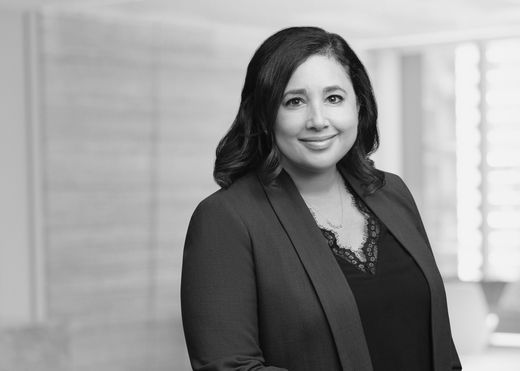Form SHL: Reports by US Issuers and Others on Foreign Ownership Due August 30, 2024

The U.S. Department of the Treasury requires U.S. issuers—including U.S.-domiciled investment funds1—to report foreign residents’ holdings of U.S. securities every five years on its Treasury International Capital (TIC) Form SHL. Form SHL is a mandatory survey of holdings of U.S. securities, including equity, debt, asset-backed securities and selected money market instruments, by foreign residents as of June 28, 2024. This data will be used in the computation of U.S. balance of payments accounts, the formulation of U.S. international economic and financial policies and to meet international reporting requirements. Any U.S. private fund that has foreign ownership of at least $200 million will have a filing obligation.
Filers should submit Form SHL no later than the last business day of August to the Federal Reserve Bank of New York (FRBNY)2 if they received the form from the FRBNY or if they are a U.S. issuer, custodian or securities depositary that has more than $200 million in reportable securities (as defined below). Whether an entity satisfies the $200 million threshold must be determined as of the last business day of June, which was June 28, 2024.
Who Must Report
Whether a U.S. issuer has to file a Form SHL and the content of the filed form are dictated by whether the FRBNY has contacted the issuer or fund manager and the amount of reportable securities held. All U.S. issuers that receive the Form SHL from the FRBNY are required to complete at least Schedule 1 (identifying information) of the form irrespective of the amount of reportable securities issued. Issuers that have received Form SHL from the FRBNY also must complete Schedule 2 (the securities details reporting pages)3 if they have at least $200 million in reportable securities held by foreign-resident persons, as described below. U.S. issuers that have not received Form SHL from the FRBNY are only required to file Form SHL if more than $200 million of the securities that they issued are held by foreign residents.
Foreign Ownership
Form SHL requires, among other things, that U.S.-resident issuers (including U.S.-domiciled funds), broker-dealer custodians and central securities depositories report foreign ownership of the U.S. securities that they have issued. U.S. issuers and fund managers must report all securities issued by U.S.-resident units, which are:
- Owned by foreign residents that are not held by either a U.S.-resident custodian, such as a broker or dealer, or a U.S.-resident central securities depository;
- U.S. securities in book-entry form that are held at a foreign-resident central securities depository; or
- U.S. bearer securities.
Securities are considered to be foreign-owned if, according to the reporter’s records, the holder of record is not a resident of the United States. Examples of “foreign residents” are residents of foreign countries, foreign subsidiaries of U.S. entities, and offshore and other non-U.S. funds incorporated or formed outside of the United States. Foreign ownership of shares of U.S.-resident funds that are managed by the reporting entity should be included, unless a U.S.-resident custodian other than the reporting entity is used.4 The determination of whether a fund’s shares are a U.S. security is based on the country in which the fund is established/incorporated, not on the place of business of the issuer of the securities the fund purchases.
Reportable Securities
U.S. equity securities, including common stock, preferred stock, restricted stock, fund interests and all other equity interests other than “direct investments” (as defined below) must be reported on Form SHL and included in the calculation of the above filing thresholds. In addition, asset-backed and debt securities, including all long-term and short-term debt securities, commercial paper, index-linked debt securities and negotiable certificates of deposit, must be reported.5
A “direct investment” exists when a U.S. company owns 10% or more of the voting equity securities of an incorporated foreign business or when a foreign company owns 10% or more of the voting equity securities of an incorporated U.S. business. All holdings that qualify as direct investments should be excluded from the SHL Report. Limited partners in a limited partnership do not have voting rights and therefore cannot constitute a direct investment. General partnership ownership interests are generally considered direct investments and therefore are not reportable securities. There is a carve-out to the definition of “direct investments” for an investment of more than 10% in the voting equity securities of a private fund unless that private fund also owns more than 10% of the voting securities of an operating business.
Reporting Examples Specific to Hedge Funds and Other Alternative Investment Vehicles
Example 1
An investment manager (whether foreign or domestic) creates a private fund comprised of a U.S. master fund, a Cayman feeder fund and a U.S. feeder fund. The investment that the foreign feeder fund has in the master fund is a portfolio investment and should be reported on Form SHL. If a U.S. custodian is involved in holding the “domestic security” then the reporting responsibility would be on the U.S. custodian to report on the Form SHL.
Example 2
An investment manager (whether foreign or domestic) creates a Cayman master fund, a Cayman feeder fund and a U.S. feeder fund. No reporting would be necessary for the investment in the Cayman master fund relating to the U.S. feeder fund or the Cayman feeder fund on Form SHL.6 In the unlikely event that a foreign-resident investor owns a portion of the U.S. feeder fund, the foreign ownership of the U.S. securities issued by the foreign fund would need to be reported on Form SHL.
Preparation for Filing
Entities that are required to file Form SHL should begin completing their Form SHL in preparation for the August 30, 2024 deadline and ensure that they have the requisite 10-digit Reporter ID number assigned by the FRBNY.7 Instructions and other information regarding Form SHL are available here. Filers submitting 100 or more Schedule 2 records (i.e., securities positions) must submit electronically using the Federal Reserve Reporting Central System. Those submitting fewer than 100 Schedule 2 records may use the Reporting Central System or a paper version of Form SHL.[i] Schedule 1 must be submitted in the same package as Schedule 2 data. If a U.S.-resident adviser advises multiple issuers, it can consolidate its reporting across issuers in one report. There are potential civil and criminal liability and penalties for failure to file timely and accurate reports for any U.S. person or group subject to the reporting requirements, including but not limited to imprisonment. All data used to create the Form SHL report must be retained by the reporter for a period of 36 months from the date of the submission of the report.
If you need assistance or have questions regarding this alert, please contact your Akin relationship attorney or one of the authors.
1 U.S.-resident custodians and central securities depositories are also subject to reporting but their obligations are not described this alert.
2 The FRBNY acts as agent for the U.S. Department of the Treasury with respect to these filings.
3 Schedule 1 of the Form SHL contains identifying information, a description of the filer, valuation techniques the filer employs for each reporting unit, a summary of Schedule 2 information and a certification. Schedule 2 contains identifying information and security descriptions of each foreign holding of each U.S. security, including the name of the issuer, the type of securities, the currency denomination of the securities, the country and type of the foreign holder and the market value of the securities.
4 Additionally, if a U.S.-resident custodian uses a U.S.-resident sub-custodian, the custodian should report only if it does not maintain separate accounts at and disclose the clients to the sub-custodian.
5 Examples of securities not to be reported include: (i) derivative contracts (including futures, forwards, swaps, options and warrants); (ii) securities temporarily received as collateral under resale agreements; (iii) loans or loan participation certificates; (iv) letters of credit; (v) bank deposits (except for negotiable certificates of deposit) and demand deposits; (vi) annuities, including variable rate annuities; (vii) securities issued in the United States by foreign-resident entities, even if denominated in U.S. dollars and traded on U.S. exchanges (such as American depositary receipts); (viii) securities issued by foreign subsidiaries of U.S. entities, even if guaranteed by a U.S. entity and (ix) securities issued by foreign-resident entities under Section 144A of the Securities Act of 1933.
6 The investment by the U.S. feeder fund in the Cayman master fund should be reported on Form SHC when its quinquennial reporting cycle is up.
7 Filers may obtain a Reporter ID by calling 212.720.6300 or 646.720.6300, or by emailing SHLA.help@ny.frb.org.



